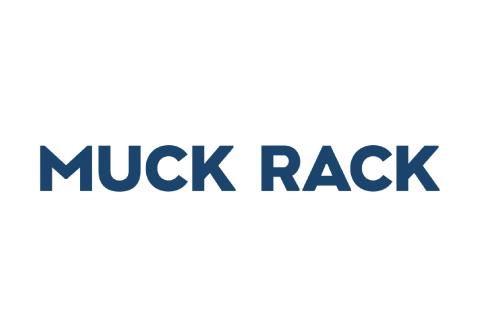
A conversation with Steinreich Communications’ Ariella Steinreich
Muck Rack
By Andrew Flynn
Today, Steinreich Communications announced that they have appointed Ariella Steinreich as Director of Media Relations. Ariella, a 2013 finalist for PR Week’s Young Professional of the Year award, joins from Burson-Marsteller where she was a senior associate handling global media relations for several clients.
With a shift in the media lancscape the firm recognized that they must bring a closer integration between traditional and social media campaigns. As many journalists become bigger than the outlets they’re writing for, it’s essential to build relationships with these journalists, especially through social. Not only has social media changed the way in which we think about journalism, it’s also changing the way in which we measure results. We recently spoke with Ariella about her new role, how she uses Muck Rack to measure PR efforts, and what’s to come from the firm in 2015.
Muck Rack: Why did you decide to join Steinreich and what will your role be at the company?
Ariella Steinreich: I’ve been lucky to grow up in this industry and to learn from phenomenal mentors across the world, however, my first mentor in this industry was my father and when this opportunity opened up to join his firm and learn from him on a daily basis, I jumped at it. Even when I was younger, I had always enjoyed media – whether it was watching Wolf Blitzer on CNN or having the opportunity to accompany my father to a morning show segment on behalf of a client – I’ve always been fascinated by it. My friends still jokingly make fun of what I asked to do for my 21st birthday – to get tickets to Good Morning America and meet Sam Champion and Robin Roberts. While that isn’t what most people request for their 21st birthday, my friends kindly played along and went with me at 5am. Within the last decade, media relations has evolved further, traditional print publications have put more emphasis into their digital offerings with platforms such as live TV and radio; new publications have opened and at the center of all of this is the PR industry which has needed to be agile in order to meet the demand of its clients while leveraging these new platforms.
Steinreich Communications puts a large focus on media and has been working with its clients to think outside of the box. I’ve joined its media team as Media Relations Director and my role will be to provide media strategy and counsel as well as to oversee the integration of traditional and social media campaigns. I’ll also help the various teams and clients continue to navigate the evolving media landscape in order to develop media strategies that will lead to driving measureable business results, a core tenet of the work we do with our clients.
MR:What’s the biggest change you’ve seen in PR since you first started working in the industry?
AS: The biggest change I’ve seen is the integration with social media. Five or six years ago, many in the industry viewed social media as only a way to further share an article. For instance, if someone was mentioned in an article, they’d then share it via social media platforms and that was usually the end of the engagement. Fast forward to the present and we are working with clients to develop full social media engagement and amplification strategies. The definition of a journalist has changed – it is no longer just a journalist at a publication but now it includes bloggers and influencers who are equally important to spreading a brand’s message. It’s about engaging with your stakeholders and media via social platforms – whether that is doing a Tweet Chat or Hangout or recording a video to be shared via YouTube or Vine. Social media has caused many journalists to become their own brand by sharing their articles and events in order to attract a larger following and by counseling our clients to engage with these journalists via social media, they are more likely to come back to us when they are working on another story where our client would be a nice fit.
Another big change I see is the momentum moving from the news organization to the journalist. The journalist is the brand today and the outlet is somewhat secondary. We see this from the client perspective as well. Many clients are coming to us saying that they want to be in a story by a specific reporter rather than they want to be in specific publications. I think this is due to the journalists becoming influencers and thought leaders in the space and being an expert on a specific subject. For instance a client who is looking to attract attention from CMOs tends to be more interested in speaking with key journalists who cover that space rather than saying they want to be in a specific publication because the CMOs tends to be more attracted to the content generated by that specific journalist rather than to the publication in general.
MR:How do you use social media to build relationships with journalists?
AS: I usually check LinkedIn and Twitter when building relationships with journalists. I usually grab coffee with them to learn about the stories they are working on and before that meeting, I check LinkedIn to see if we have any connections in common as that is always a great thing to bring up during the conversation. I then check Twitter as I’ve found that many journalists use the platform for a combination of professional and personal purposes. By checking their Twitter profile, I can take a quick look through their recent articles as well as learn a bit about them – perhaps we have a hobby in common or went to the same school, both of which are great to bring up during the meeting. I usually follow them on Twitter before the meeting and then following the meeting, connect with them on LinkedIn.
It’s important to note that social media is faster and easier for journalists to access. A 140-character pitch may be harder for us to compose, but far easier for the journalist. If we are succinct and on target, the reporter gets it faster and can make a quicker decision. The “old” days of a long pitch and a press release are dwindling.
MR: How do you think Muck Rack is helping communications professionals connect with journalists and track coverage
AS: Muck Rack is helping communication professionals connect with journalists by offering events for PR folks to meet journalists as well as by offering its fantastic search tools and functions via the website in order to hone in on exactly the best way to pitch journalists in a “more social way.”
MR: Which Muck Rack tools do you find the most useful and why?
AS: I find that the social analytics tools are most helpful because in today’s media environment measurement isn’t just about the circulation numbers or VPM but rather how many people engaged with the content. Therefore, it is crucial to also track how many people are sharing the story on Facebook, retweeting or favoriting it on Twitter, sharing the picture on Instagram etc. By providing this holistic picture to our clients we are able to share in-depth analysis as to who is engaging with their brand as a result of a media campaign.
MR: In today’s media landscape, how do you measure PR success?
AS: PR success will vary for each client as it’s based on their unique objectives and we gauge success based on client ROI – for instance, does the media hit generate sales, recruit new employees, generate new members, etc. The barometer for us is if our work is moving the needle for clients.
MR: How do you leverage social media to connect with local journalists while you’re on media tours?
AS: Social media is a terrific communications tool, especially while on media tours as it allows you to continuously engage with journalists before, during and after the tour. For example, we recently worked with a client on a media tour where we encouraged them to tweet at the journalists who we would be meeting with and we then developed a hashtag for journalists to use when tweeting nuggets from the conversation or posting pictures. Due to many of the journalists having A large following, those Tweets were further shared, resulting in very high numbers of engagement for the client.
MR: Do you plan on making any significant changes to Steinreich’s media strategy?
AS: The media team at the firm is really great – they are always researching the newest traditional or social media trend and then developing a strategy to bring forth to clients for consideration. I don’t have any big plans to make significant changes but one of the things I’ll be working on is integrated content. Over the last few years we’ve all read about publications losing ad dollars and many are looking for new revenue streams, one solution gaining a lot of interest from media outlets is sponsored content. This is a trend we are seeing in the space and one that our clients are very excited about. I’ll be working to connect our clients with relevant opportunities in this area.
MR: What do you read on a daily basis to make you more effective in your career?
AS: Of course, I read the MuckRack Daily as soon as it arrives in my inbox! To be a good media strategist, it’s important to have a pulse on the news stories and trends each day. Therefore, I can often be found reading traditional publications such as The Wall Street Journal and the Financial Times on my way to work. There is also a balance between reading some of the more traditional publications and some “new media outlets,” therefore I also read Business Insider, Huffington Post and Quartz. Aside from reading these and other publications daily, I also use Twitter to identify the key headlines and stories for the day. Twitter has provided a unique media environment where I can scan the latest headlines and based on their 140 character summary, I can determine which articles to continue reading.

